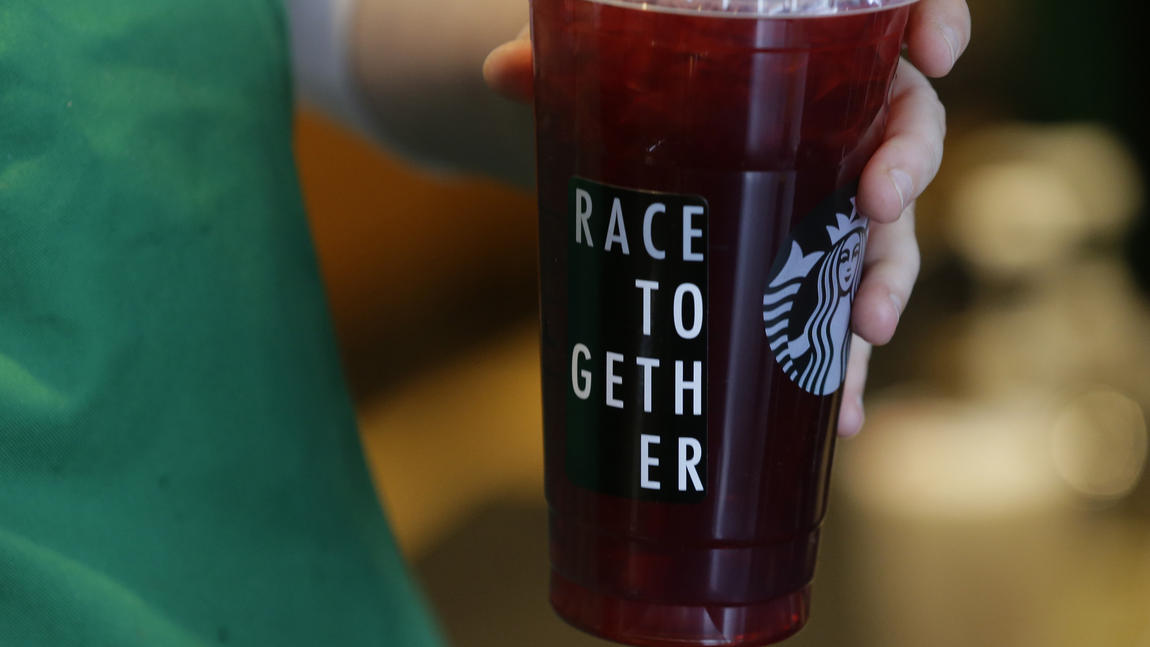As pundits from across the media landscape wring their hands over the “debacle” created by Starbucks CEO Howard Schultz’s “#RaceTogether” campaign, questions remain as to what impact this event will have on the company, the race relations “conversation,” or even whether this blatant attempt at social engineering really is a debacle at all.
|
“I don’t care what you say about me, just spell my name right” — P.T. Barnum
If raising Starbucks’ – or Howard Schultz’s – visibility as a potential agent of social change was the objective, it’s hard to argue this isn’t a masterpiece of good, if not unintended, consequences. It would have taken tens, if not hundreds, of millions of dollars in print and broadcast advertising to put Starbucks back into the minds of American consumers as vividly as this past weekend’s “mistake.”
And if Schultz’s attempt to stretch the meaning of his brand ultimately fell short, perhaps he learned a valuable lesson about what consumers want from their brands. Maybe it is as simple as fulfilling their core brand promise to begin with, and nothing more.
For me, I take my coffee black.
Michael Ares,
Guest Blogger
 With more than 30 years of proven expertise Michael brings extensive experience in corporate positioning, strategic marketing, financial communications and investor relations counsel to organizations undergoing significant change. Michael began his career in Silicon Valley in the early 1980s, where from 1984 to 1991 he directed investor relations and corporate communications for Chips and Technologies, Inc., the inventor of integrated PC chipsets that helped put such companies as Compaq, Hewlett-Packard and Dell into the IBM-compatible PC business they came to dominate. An early member of the start-up team, he helped launch more than 100 new products and directed investor relations during the company’s transition from private to publicly held entity.
With more than 30 years of proven expertise Michael brings extensive experience in corporate positioning, strategic marketing, financial communications and investor relations counsel to organizations undergoing significant change. Michael began his career in Silicon Valley in the early 1980s, where from 1984 to 1991 he directed investor relations and corporate communications for Chips and Technologies, Inc., the inventor of integrated PC chipsets that helped put such companies as Compaq, Hewlett-Packard and Dell into the IBM-compatible PC business they came to dominate. An early member of the start-up team, he helped launch more than 100 new products and directed investor relations during the company’s transition from private to publicly held entity.
Michael received a B.A. in philosophy of language and an M.A. in rhetoric, both from the University of California at Berkeley. He is a graduate of Syracuse University’s Whitman School of Management Entrepreneurial Boot Camp, 2005.

 As design director at Cookerly, Tim serves as the creative lead in the development of branding campaigns, print collateral and digital media for clients across a broad range of industries, including consumer, professional services, healthcare and technology.
As design director at Cookerly, Tim serves as the creative lead in the development of branding campaigns, print collateral and digital media for clients across a broad range of industries, including consumer, professional services, healthcare and technology. As a senior vice president at Cookerly, Mike Rieman is a strategic communications leader specializing in media relations and reputation management. With a proven track record of securing high-profile placements in top-tier outlets such as The New York Times, The Wall Street Journal, CNN and USA Today, he excels at crafting compelling narratives that resonate across print, broadcast and digital platforms.
As a senior vice president at Cookerly, Mike Rieman is a strategic communications leader specializing in media relations and reputation management. With a proven track record of securing high-profile placements in top-tier outlets such as The New York Times, The Wall Street Journal, CNN and USA Today, he excels at crafting compelling narratives that resonate across print, broadcast and digital platforms. Mike Touhill is vice president at Cookerly Public Relations, where he helps lead traditional, social and digital media programs for B2B and B2C clients in packaging, telecommunications and technology, among other industries. As a communication leader, he develops and executes public relations strategy, provides proactive and reactive counsel to C-level executives and secures earned media coverage for client initiatives and product.
Mike Touhill is vice president at Cookerly Public Relations, where he helps lead traditional, social and digital media programs for B2B and B2C clients in packaging, telecommunications and technology, among other industries. As a communication leader, he develops and executes public relations strategy, provides proactive and reactive counsel to C-level executives and secures earned media coverage for client initiatives and product. Andrew Agan is a vice president at Cookerly Public Relations, overseeing the agency’s internship program and leading media relations, content strategy and social media initiatives. He provides counsel and executes campaigns for clients across various sectors, including finance, healthcare, hospitality, technology, automotive and many others. Andrew excels at crafting compelling stories and building media relationships, resulting in clients being featured in notable outlets such as CNBC, Associated Press, Business Insider, Fox Business, HBO, Inc. Magazine, Sirius XM, The Wall Street Journal and USA Today, among others.
Andrew Agan is a vice president at Cookerly Public Relations, overseeing the agency’s internship program and leading media relations, content strategy and social media initiatives. He provides counsel and executes campaigns for clients across various sectors, including finance, healthcare, hospitality, technology, automotive and many others. Andrew excels at crafting compelling stories and building media relationships, resulting in clients being featured in notable outlets such as CNBC, Associated Press, Business Insider, Fox Business, HBO, Inc. Magazine, Sirius XM, The Wall Street Journal and USA Today, among others.


 As vice president of Cookerly, Sheryl Sellaway uses her extensive corporate communications background to lead consumer PR efforts, deliver strategy for marketing programs and share expertise about community initiatives.
As vice president of Cookerly, Sheryl Sellaway uses her extensive corporate communications background to lead consumer PR efforts, deliver strategy for marketing programs and share expertise about community initiatives.